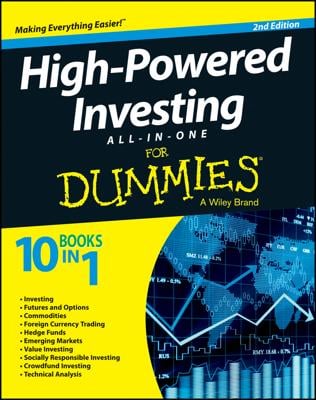Stock options can be used as substitutes for the underlying stocks when swing trading. A stock option is a limited-duration contract that grants the option buyer the right to either buy or sell a stock for a fixed price. The option seller, called the option writer or the option grantor, is granting the right to the option buyer to either buy or sell a specific stock for a fixed price.
Each option represents 100 shares of stock. A call is an option to buy 100 shares of a specified stock. The call buyer is acquiring a limited-duration right to buy 100 shares of a stock from the option grantor at a fixed price, called the strike price.
A put is an option to sell 100 shares of a specified stock. The put buyer is acquiring a limited-duration right to sell 100 shares of a stock to the option grantor at the specified strike price.
You can, for example, substitute a call option for a long stock position or a put option for a short stock position. You realize any profits by selling the options outright, or you can exercise an option and take possession of the shares of stock. Swing traders, however, are more likely to sell the option than exercise it.
Although using options as stock substitutes has several advantages, it also has risks of its own. The primary advantage: An option costs far less than the underlying stock, which enables you to limit your risk to the price of the option.
Each option is a substitute for 100 shares of stock or 100 shares of an exchange-traded fund. One call option, for example, gives you the ability to buy 100 shares of a stock at a fixed price for a certain length of time. As an example, assume that the QQQQ exchange-traded fund is trading at $27.10 per share.
At the time of the example, you can buy one call option with a $27 strike price for $2.26 per share, or a total of $226, before transaction costs. That one option enables you to buy 100 shares of QQQQ for $27 before the option expires.
Say that the option in this example has approximately six weeks before expiration. Your option position is therefore profitable as long as the QQQQ exchange-traded fund trades above $29.26 (excluding transaction costs) before the expiration date. Your risk is the price of the option. In other words, you can’t lose any more than $2.26 per share, or $226, on this trade.
Unfortunately, option pricing is not as straightforward as stock pricing. The pricing example above is merely a snapshot that varies with changes in the price of the QQQQ exchange-traded fund. The following factors affect option prices:
Options expire and their prices decay as the expiration date draws closer. This price decay is caused by the option’s falling time value.
The prices of current-month options decay at faster rates than longer-dated options.
In percentage terms, out-of-the-money options often move at a faster rate than in-the-money options. (An option is said to be in the money if it has intrinsic value. For a call option, that means the price for the underlying stock is greater than the specified strike price. For a put, that means the price for the underlying stock is less than the strike price.)
Note: Trading options that are far out of the money is rarely a good strategy.
Volatility is a component of option pricing. Option prices rise and fall as the volatility of the stock rises and falls.
Except in a few unusual circumstances, an option’s price doesn’t move in lockstep with the underlying stock’s price. If a stock moves $1, the option, in general, moves some amount less than $1. The more an option is in the money, the closer the change in an option’s price will be to the change in the underlying stock’s price.
Another factor to consider when substituting options for stocks is that the option’s spread, or the difference between the bid price and the ask price, is extremely wide when considered as a percentage of the option price.
Before you decide to substitute options for your stock trades, make sure that you understand the option-pricing model. And be careful that you don’t overtrade with options. If you normally buy 100 shares of a stock, then you need to buy only one option contract.
Although the price of ten option contracts may be attractive when compared with the price of the stock, ten option contracts nevertheless represent 1,000 shares of stock. When buying options for ten times the number of shares that you normally trade, you’re increasing your exposure to risk by a factor of ten.
When trading options, you can’t make money in as many ways as you can lose it. Being right on the stock’s direction but still losing money on an option trade is possible because of pricing issues. That’s why gaining an understanding of the option-pricing model is so important before you try to substitute an option for a stock.

